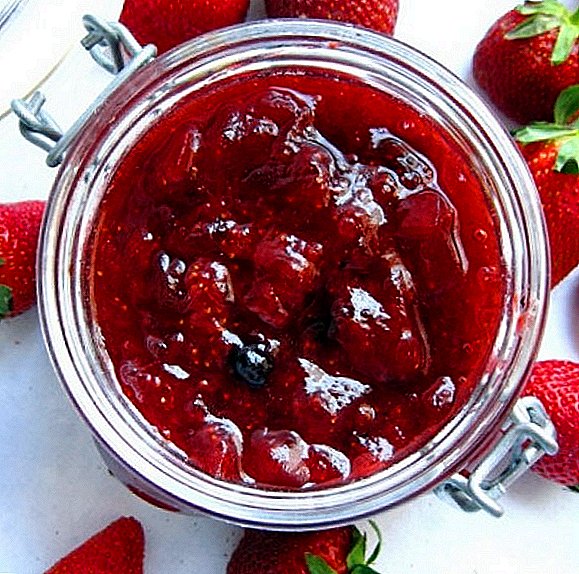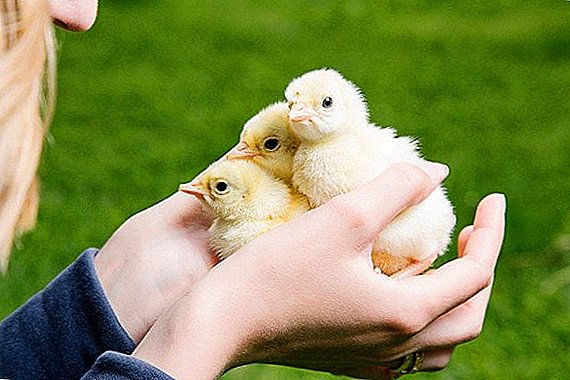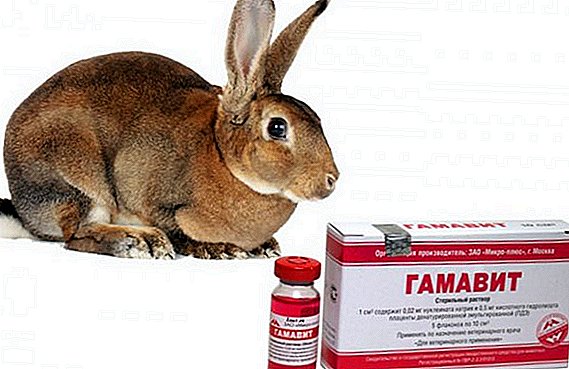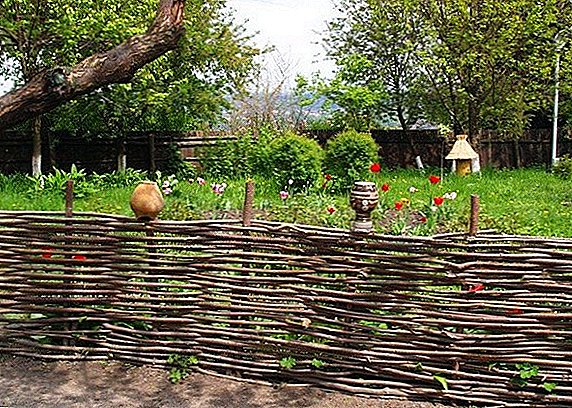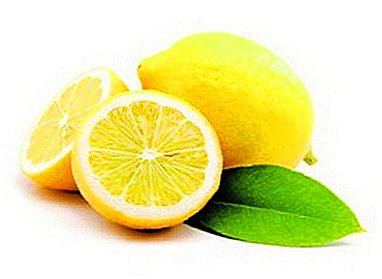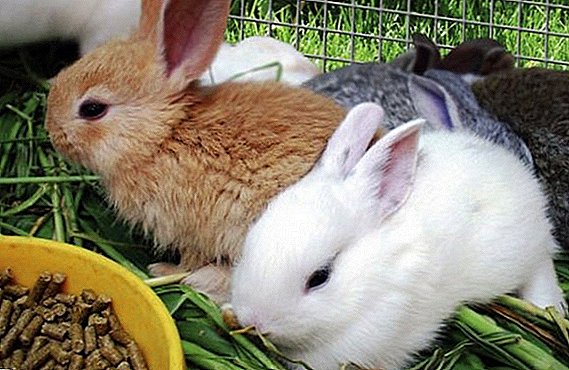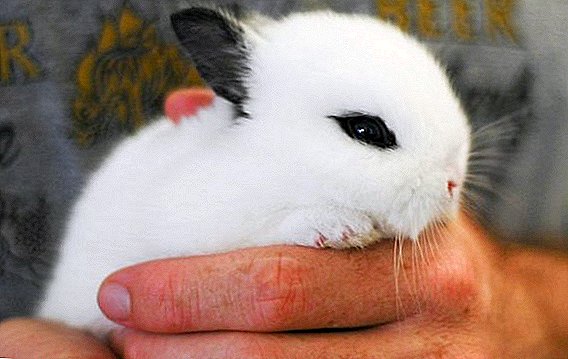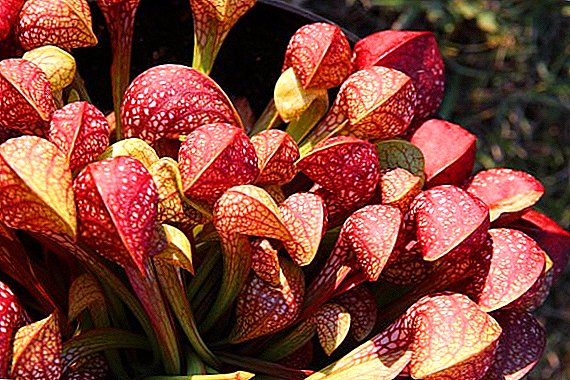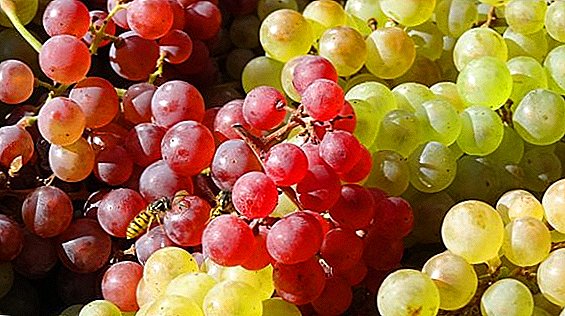 Perhaps in your area a harsh long winter and a thermometer in the winter often crosses the mark at -20, but this does not hurt to plant a vineyard and, following our advice, grow an excellent harvest of the sun berries.
Perhaps in your area a harsh long winter and a thermometer in the winter often crosses the mark at -20, but this does not hurt to plant a vineyard and, following our advice, grow an excellent harvest of the sun berries.
What grape varieties to grow for beginners in the middle lane
Of course, grapes grow in almost every summer cottage. If you do not live in the south, it is often grapes "Isabella". The unpretentious grade, gives a plentiful harvest, shadows sites from the sun and decorates arbors. But his berry is rather small, sour and with a tart taste.  Over the past couple of decades, thanks to the selection work of amateurs and professionals, winegrowers have developed many varieties with high frost resistance and large sweet berries. A huge selection of varieties with a variety of flavors and colors of berries, brush shapes. Among this varietal sea, we will select the best grape for the middle band.
Over the past couple of decades, thanks to the selection work of amateurs and professionals, winegrowers have developed many varieties with high frost resistance and large sweet berries. A huge selection of varieties with a variety of flavors and colors of berries, brush shapes. Among this varietal sea, we will select the best grape for the middle band.
 Having bought a good varietal sapling, we can expect a good harvest. If you want to grow grapes with a hint of berries from white to pink, choose these winter-hardy varieties:
Having bought a good varietal sapling, we can expect a good harvest. If you want to grow grapes with a hint of berries from white to pink, choose these winter-hardy varieties:
- Yantar Samarsky
- Delight
- Muscat Tsikhmistrenko
- Dessert Muscat
- Aleshenkin
- Crystal
- Laura.
If you prefer grape varieties with a color of berries from blue to dark purple, then pay attention to these varieties:
- Brother Delight
- Agat Donskoy
- Purple early
- Cardinal
- Kishmish unique
- Codrean
These varieties have large sweet berries with a wonderful delicate aroma.
What is important to know about planting grapes
Selection of seedlings

Important! Grape seedlings are best purchased from amateur collectors, in large fruit nurseries or from breeders. It is advisable to come and see how the grapes grow in the desired variety in the nursery, how it bears fruit, what care it requires. Buying a grape stalk or a sapling, you will be sure that you have bought exactly the desired variety. Avoid natural markets.
When buying grapes, follow these rules
- Get saplings in the spring (March - April)
- It is best to buy grapes saplings from a seller who knows everything about grapes and growing them and will be happy to share with you the knowledge and tips on how to care, show photos from your garden. Give the address and phone number.
- The two-year sapling will have a powerful root system with light roots.
- Purchased seedlings need to be treated with preparations "BI-58" or "Kinmiks" (in a double dose) from the grape pest - phylloxera. Dilute the drug in water at the rate of 2 ml. 10 liters of water. Soak in this solution seedlings for half an hour and wash.
- Purchased seedlings are planted on the street only in the second decade of June. Before disembarking, they are stored in paper bags with perforations.
At the beginning of May, you can plant in five-liter buckets and grow to the south until June.


The photo shows a two-year-old grape sapling with a strong root system.
Choosing a landing site
Under the planting of the vine, we choose a place that is closed from the north winds (the wall of a shed, a house or a fence), sunny. The soil should be with drainage (not marshy lowland). Grapes prefer the arrangement of rows from south to north. If there is even a slight bias, then plant grapes on the southern or south-western slopes.
 When the site is completely flat, and the southern wall of the house is already occupied, then you can build a fence no higher than two meters and orient it from east to west. You will immediately become aware of the secrets of the yield of vineyards at monasteries! You can instead build a thick fence thick fence.
When the site is completely flat, and the southern wall of the house is already occupied, then you can build a fence no higher than two meters and orient it from east to west. You will immediately become aware of the secrets of the yield of vineyards at monasteries! You can instead build a thick fence thick fence.
Ways of planting grapes
1. If the soil for planting grapes is sandy, then seedlings should be planted in trenches.

2. If the soil is loam or clay (these soils do not heat well) or a plot with shallow subterranean waters, then the growers recommend planting on high ridges. Such ridges in ancient times were called "created". 
Rules for the care of grapes in the middle lane, tips for beginners
1. Do not rush to plant new grapes in a permanent place.
Let the young seedlings grow quietly in shkolke until the first berry brushes. It is more convenient to care for seedlings in shkolka. Easier cover from frost.
Growers from the northern regions in most cases try not to plant young seedlings in a permanent place, instead, in the first summer they plant each seedling in a large container and these containers drop half of them into the ground of the schoolhouse.
 With the onset of cold weather, containers are transferred to the basement and overwinter there. In the last days of May, they are transferred from container to ground.
With the onset of cold weather, containers are transferred to the basement and overwinter there. In the last days of May, they are transferred from container to ground.
This technology of growing grape seedlings allows them to grow faster and start fruiting earlier.
2. Plan your vineyard
Varieties of table and wine grapes need to be planted separately. The landing scheme is different.
Table Grapes It lands at least one and a half meters with the distance between the bushes, and wine varieties - thicker, the intervals between the bushes are 0.8 m. The inter-row spans are 2-2.5 meters.
 Divided into groups of grapes, given the cold resistance and the ripening of berries, it is easier to ensure the cultivation and care in the middle lane.
Divided into groups of grapes, given the cold resistance and the ripening of berries, it is easier to ensure the cultivation and care in the middle lane.
Only varieties that require it will be processed and sheltered.
3. Graft saplings brought from Europe or from warm areas are planted almost lying horizontally..
Lying down, they eventually increase their own roots and adapt to new weather and temperature conditions.
 Not everyone knows that vertical polarity is characteristic of grapes. Fruiting grapes shoots tied up strictly horizontally. This gives the same development of all green young shoots.
Not everyone knows that vertical polarity is characteristic of grapes. Fruiting grapes shoots tied up strictly horizontally. This gives the same development of all green young shoots.
Did you know? If the garter is made vertical, only shoots from the buds located at the top will grow well, and those that grow below will lag behind in growth.
Formation of grape bushes
- All methods of forming grape bushes are divided into concealed and non-sheltered groups.
- Fan and some cordon formirovki require shelter bush for the winter and therefore are called sheltered.
- The bushes with the stem and bowline arbor do not hide in the winter.
- Standard and bowing shaping are used in areas of the middle band in the case when frost-resistant grape varieties are grown.
- The future harvest of grapes is laid on a well-ripe vine this year. From her eyes in the spring come out fruit lash.

Stand Forming Method
The first year the seedling is allowed to settle down and form a bush only from the second year of life, its formation continues for five years. When the foundation of the skeleton of the bush is created, the need for constant shaping disappears.
 In the future, the form is maintained by trimming in the fall. In the fall, 90% of one-year lashes are removed on adult grapes, and lashes of this summer are cut out, on which clusters have already ripened. All thin non-fruiting whips are also removed.
In the future, the form is maintained by trimming in the fall. In the fall, 90% of one-year lashes are removed on adult grapes, and lashes of this summer are cut out, on which clusters have already ripened. All thin non-fruiting whips are also removed.
Form the grapes according to the method of Guyot.
In the north, the standard grape formation is one of the most successful. This is a classic form-building system. It was introduced by the Frenchman Guyot in the 19th century. An experienced winegrower, Guyot, proposed a simple shaping, in which the grape clusters were not shaded by excess green mass and matured perfectly.
1 year - a powerful whip grows, it is shortened in autumn, leaving two eyes above the ground or above the grafting site. In some cases, left three eyes (just in case).
2 year - two single-year lashes grow from non-excised buds (they usually grow on the strongest of one-year ones), cut them into a short one (or replacement knot), leaving 2-3 buds and a long one.
 Long is the fruitful vine of the next year. In the fall, a new knot and a new fruit vine will again be formed from the replacement knots. The length of the fruit vine is regulated by pruning; four buds are left on the young bush.
Long is the fruitful vine of the next year. In the fall, a new knot and a new fruit vine will again be formed from the replacement knots. The length of the fruit vine is regulated by pruning; four buds are left on the young bush.
And an adult grapevine requires 6 to 12 buds. At the time of ripening of the crop, shortening the arrows, you can reduce the load on the fruit-bearing grapes, thereby accelerating the ripening of the grapes.
3 year - make horizontal garter lashes. In such a garter from the buds of the vines stretch one-year fruit lash. They are strengthened exactly up, together with the knots from the knot of substitution, so that they develop faster.
When it finally gets warmer, the fruiting vine is tied parallel to the ground with a trellis wire, taking into account the polar verticality of the crop. Garter parallel to the ground will give a powerful growth of one-year fruit lashes from the bud-eyes of the fruiting vine.
 Both lashes from the knot of the replacement knot are tied vertically to the trellis wire, and they develop well. Scourge that were with the harvest this summer, delete. Everything is cut to the bitch.
Both lashes from the knot of the replacement knot are tied vertically to the trellis wire, and they develop well. Scourge that were with the harvest this summer, delete. Everything is cut to the bitch.
There is only a knot, on which there are two vines grown in the summer. They will go to the formation of a new bitch and a new vine. The entire pruning process is repeated every year.
We form a grape bush in the way "Fan".
What is the difference between the fan formation of grapes from the formation of the Frenchman Guyot.
The formation of a "fan" provides for the grapes are not two fruit-bearing sleeves, but five or more. These sleeves are tied up with a fan with the direction of the shoots vertically. The length of the sleeves dictates which shape to use.
Grape sleeves are large and small, standard and non-standard, single and multi-storey, when fruit strings are tied over one another.
In the northern regions, they are more willing to use such a non-standard formation, otherwise “Fan” or “Half Tower”. It is convenient to cover shrubs with such a formation, it is easier to form the sleeves and rejuvenate the bush with pruning. It contributes to high yields.
1. The first couple of years we take care of the grapes, as with the use of the Guyot technique.
2. Spring of the third year begins with the formation of a sleeve. We grow two vines on one sleeve.
3. Three-year-old vines have already given birth, and the plant grows four meter lash. These lashes are cut in the fall, given the length of the desired sleeves. The minimum length of the cropped whip is not less than half a meter. They are tied to the bottom bar of the trellis by a fan. Garter height up to 50 cm from the ground.
 Over the summer, absolutely all one-year lashes are cut out on all sleeves, leaving only 2-3 upper ones. They will go on the subsequent creation of the fruit link and the continuation of the grape sleeves. They are tied up strictly on the trellis.
Over the summer, absolutely all one-year lashes are cut out on all sleeves, leaving only 2-3 upper ones. They will go on the subsequent creation of the fruit link and the continuation of the grape sleeves. They are tied up strictly on the trellis.
Even before the shelter of the vineyard for the winter, the whole unduvine vine and antennae are cut. If the vine on the bush is well matured, then we bite the upper whip on the fruiting vine with the shears, and shorten the whip that is below with the shears to the replacement knot.
In the future, such shaping is done already on all sleeves, cutting the upper vine by 5-6 eyes for a fruit whip, and cutting the vine from below by 2-3 buds for a replacement knot. Gradually, the sleeves become more, their number increases to 7-8.
If the vineyards are sheltered with dry material for the winter, then such fruit branches will bear fruit for many years.
Soil care
The land under the vineyard is well fertilized. In the autumn, fertilizers must be filled up under the digging into the vineyard land.
Up to 10 kg of manure + 50 g of ammonium nitrate and potassium salt + 100 g of superphosphate per one bush. Before flowering and as soon as the berries begin to sing, liquid fertilizer is applied along with irrigation.
 20 g of superphosphate + 10 g of ammonium nitrate is taken on a bush. Fertilizers are dissolved in a bucket of water. With this solution, the plant is watered under the root or through the drainage grooves.
20 g of superphosphate + 10 g of ammonium nitrate is taken on a bush. Fertilizers are dissolved in a bucket of water. With this solution, the plant is watered under the root or through the drainage grooves.
The vineyard requires constant loosening of the soil in the rows and between the rows. During the summer, winegrowers loosen more than 6-7 times.
Important! If chemical and organic fertilizers are applied together, their amount is halved.
Watering and feeding grapes
Watering for young grape saplings is necessary. In order to feed and water the grapes in time, you can stick plastic bottles with a cut-off bottom at each seedling. It is better to take 2- or 5-liter bottles and dig them down with your neck (no cork). Such a simple device will simplify the care of grapes for beginners.
If the grape variety is table, then after a couple of years, the irrigation bottles are replaced with meter-long asbestos pipes.
In technical grape varieties, the irrigation containers are removed after three years. Technical varieties are called wine grapes. He himself extracts water from the soil thanks to deep roots.
 A completely different irrigation technology for adult grapes. It is necessary to limit watering. Only irrigation of young grapes (up to 2 years) and autumn abundant irrigation for all varieties, providing water recharge for the winter, is needed and useful.
A completely different irrigation technology for adult grapes. It is necessary to limit watering. Only irrigation of young grapes (up to 2 years) and autumn abundant irrigation for all varieties, providing water recharge for the winter, is needed and useful.
A week before the start of flowering, watering stops - excess moisture can cause grape-colored shedding and yield loss.
Important! Do not water the vineyards by sprinkling! This provokes fungal diseases. Usually in adult vineyards, drainage ditches are dug down and pipes for soil aeration are installed at a distance of half a meter from the bushes. Grapes like dry leaves, so if you can, make a transparent canopy over the bushes.
How to prepare a vine for winter
The grapes are thermophilic and can winter well only in shelter. In the deep autumn, before the onset of severe frosts, you need to put all the shoots on the ground. Under them, pre-pour a layer of straw. Pin the grapevines to the ground with pieces of wire and sprinkle with earth or lay insulating materials on top of them.
It can be spruce branches, cardboard or wooden boxes, lutrasil or agrofibre, folded in several layers.
How to determine when to open the grapes after hibernation and if it does not freeze from the return frost?
In the spring, as soon as the snow melts and the air temperature is established above 5-7 degrees Celsius, the shelters are removed, we unravel the plant from the winter coat.
 But the materials for the shelter are not carried away from the trellis trellis, they remain lying nearby, in case of frost return. In the case of a steady decrease in temperature, it is easy to throw a shelter on the vine. And only at the end of April, the vine can be raised with a garter on the trellis.
But the materials for the shelter are not carried away from the trellis trellis, they remain lying nearby, in case of frost return. In the case of a steady decrease in temperature, it is easy to throw a shelter on the vine. And only at the end of April, the vine can be raised with a garter on the trellis.
Did you know? If straw is used in the shelter of a vineyard, then last year’s rotted straw should be taken. Then the mice will not settle under the winter shelter of the grapes and will not damage the vines.
Perhaps it is our recommendations will help you in creating a vineyard. We hope that the spiritual and physical work invested in the creation of the grape plantation, will return to you in wonderful sweet clusters.


